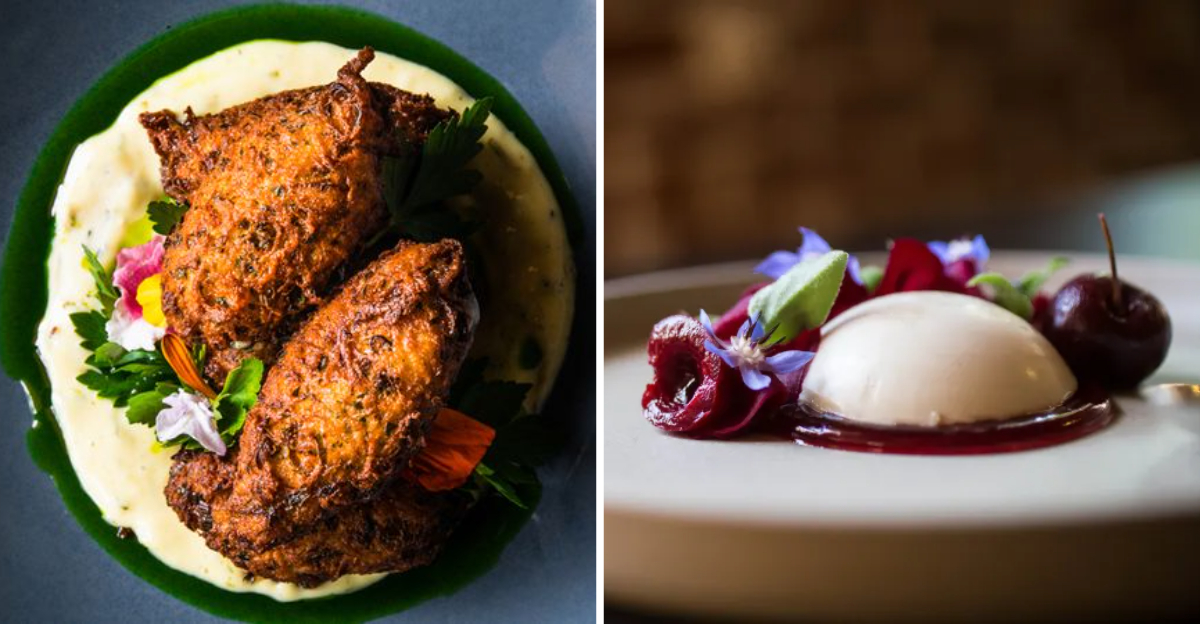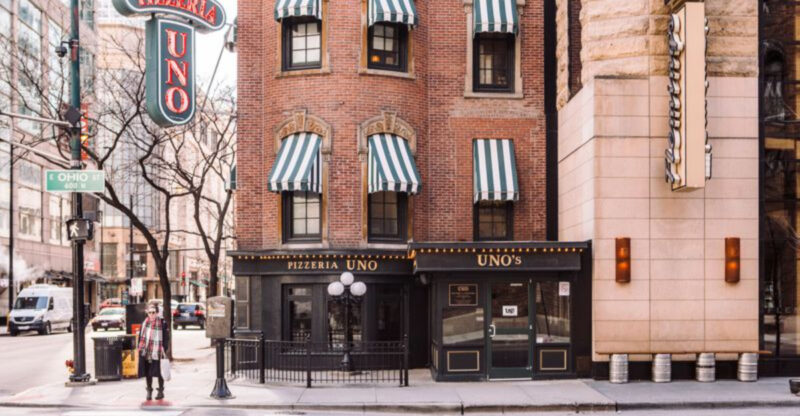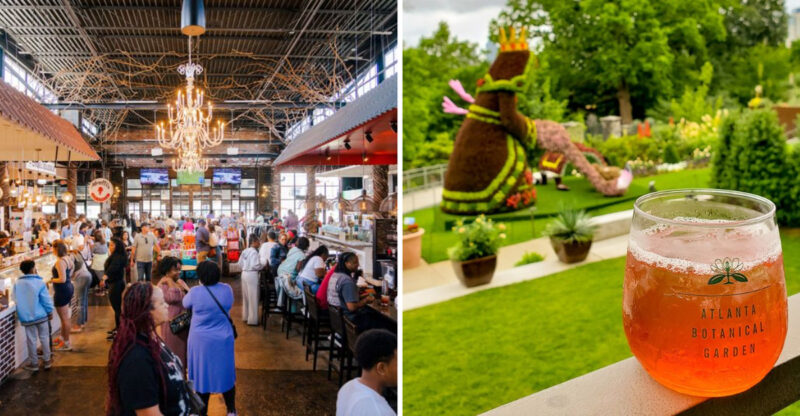Portland Restaurants Just Earned A Spot On Eater’s List Of America’s Game Changers

Portland has always been known for its incredible food scene, and now the city is getting national recognition. Eater, one of the most respected food publications in the country, recently released their list of America’s most influential restaurants.
An impressive number of Portland establishments made the cut, proving that our city continues to shape how Americans think about dining. These restaurants aren’t just serving great meals they’re changing the entire culinary landscape.
1. Pok Pok
When Andy Ricker opened this place back in 2005, nobody in America was talking about regional Thai cuisine. Most people thought pad thai and green curry were the only dishes Thailand had to offer. Ricker traveled extensively throughout Thailand and brought back recipes that were completely unknown to American diners.
His famous fish sauce wings became legendary across the country. Other restaurants started copying the recipe, and suddenly everyone wanted authentic Thai street food. The restaurant proved that Americans were ready for bold, complex flavors that didn’t hold back on spice or funk.
Though the original location has closed, its influence remains enormous. Chefs everywhere now feel comfortable serving adventurous Thai dishes that would have seemed too risky before Pok Pok showed the way.
2. Le Pigeon
Gabriel Rucker was only twenty-six when he opened this restaurant in 2006. Critics thought he was too young and his ideas were too weird. His menu featured dishes like beef cheek bourguignon and foie gras bonbons that seemed out of place in casual Portland.
But Rucker’s bold approach paid off spectacularly. He won the James Beard Award for Best Chef Northwest, proving that fine dining could thrive in a city known for food carts. His willingness to take risks inspired countless other young chefs to trust their instincts.
The restaurant showed that you didn’t need white tablecloths and stuffy service to serve sophisticated food. Diners could enjoy world-class cuisine while sitting at a casual counter wearing jeans. That relaxed-yet-elevated approach has become Portland’s signature style.
3. Canard
How often do you see duck on a breakfast menu? Probably never, which is exactly why this restaurant became so revolutionary. Gabriel Rucker opened Canard in 2014 as a daytime companion to Le Pigeon, focusing entirely on creative breakfast and lunch dishes.
The star of the menu is duck, prepared in ways you’d never expect for morning meals. Duck hash, duck leg confit, and even duck fat fried potatoes became instant classics. Rucker proved that breakfast didn’t have to mean boring eggs and pancakes.
Other restaurants across America started experimenting with unconventional breakfast proteins after seeing Canard’s success. The place demonstrated that morning diners wanted excitement and creativity, not just the same old options. Brunch culture would never be quite the same.
4. Departure
Perched fifteen floors above downtown Portland, this restaurant changed how people thought about Asian fusion. Chef Gregory Gourdet took inspiration from his Haitian-American heritage and combined it with Japanese, Chinese, Korean, and Southeast Asian techniques. The result was something completely new.
Before Departure opened in 2011, fusion cuisine had a bad reputation. Many chefs threw random ingredients together without understanding the cultures behind them. Gourdet approached fusion with deep respect and knowledge, creating dishes that honored their origins while pushing boundaries.
His health-conscious approach also stood out in an era of heavy, rich restaurant food. Gourdet proved that vibrant, flavorful dishes could also be relatively light and nutritious. Countless restaurants now follow his model of thoughtful, educated fusion cooking.
5. Langbaan
Hidden behind a regular Thai restaurant, Langbaan seats only twenty-four guests per night. Chef Earl Ninsom created this intimate space to showcase the sophisticated side of Thai cuisine that most Americans never experience. Reservations are notoriously difficult to get.
The restaurant serves a multi-course tasting menu that changes regularly based on seasonal ingredients. Each dish tells a story about Thai culture, history, and regional cooking techniques. Ninsom’s grandmother’s recipes appear alongside his own modern interpretations.
What makes Langbaan so influential is its rejection of the idea that Thai food should be cheap and casual. The restaurant proved that Thai cuisine deserves the same reverence and high prices as French or Japanese food. That shift in perception has helped Thai restaurants everywhere command more respect.
6. Ataula
Spanish cuisine was virtually invisible in Portland before Chef José Chesa opened Ataula in 2012. Sure, people knew about paella and maybe some tapas, but the depth and diversity of Spanish regional cooking remained unexplored. Chesa set out to change that completely.
His menu features dishes from Catalonia, where he grew up, alongside classics from other Spanish regions. The restaurant imports special ingredients directly from Spain, including incredible jamón ibérico and artisanal cheeses. Every dish reflects authentic techniques and flavors.
Ataula helped spark America’s growing obsession with Spanish food and wine. The restaurant showed that Spanish cuisine offered just as much sophistication and variety as Italian or French cooking. Now Spanish restaurants are popping up in cities everywhere, following the path Ataula blazed.
7. Han Oak
Did you know this restaurant operates out of a converted house? Chef Peter Cho and his wife Sun Young Park transformed their home into one of Portland’s most sought-after dining destinations. The intimate setting feels like eating dinner at a friend’s place, if that friend happened to be an incredible chef.
Han Oak serves Korean-American food that reflects Cho’s personal background and training. He worked at top restaurants before deciding to do his own thing in a completely unconventional way. The menu changes constantly, featuring whatever ingredients inspire him at the market.
The restaurant proved that you don’t need a traditional commercial space to run a successful establishment. Cho’s DIY approach inspired other chefs to think creatively about how and where they cook. Sometimes the best restaurants are the ones that break all the rules.
8. Nong’s Khao Man Gai
Nong Poonsukwattana started with just one dish: khao man gai, Thai-style poached chicken over rice. When she opened her food cart in 2009, people thought she was crazy to offer such a limited menu. But her version of this classic street food was so perfect that customers lined up daily.
The simplicity became the restaurant’s greatest strength. By focusing on one dish, Nong perfected every single element the tender chicken, the flavorful rice, the incredible sauce. Her success proved that doing one thing exceptionally well beats offering a huge mediocre menu.
Nong’s approach influenced countless other restaurants to simplify and specialize. She also showed that immigrant food entrepreneurs could succeed by staying true to their heritage rather than adapting to American expectations. Authenticity became the new currency in dining.
9. Ox
If you love meat cooked over fire, this is your paradise. Chefs Greg Denton and Gabrielle Quiñónez Denton opened Ox in 2012, bringing Argentine asado traditions to Portland. Their wood-fired grill produces some of the best steaks and chops you’ll find anywhere in America.
What makes Ox special is its whole-animal approach to butchery and cooking. The chefs use every part of the animal, creating dishes from cuts that most restaurants throw away. This nose-to-tail philosophy reduces waste while offering diners unique and delicious options.
The restaurant helped popularize South American grilling techniques across the United States. Now many steakhouses incorporate asado-style cooking and emphasize wood-fired flavors. Ox proved that American steakhouse culture was ready for bold new influences from beyond our borders.
10. Eem
Imagine Texas barbecue meeting Thai street food in the most delicious way possible. That’s exactly what happens at Eem, where chefs Earl Ninsom and Matt Vicedomini created something totally original. Their menu features smoked meats with Thai flavors and Thai dishes with barbecue influences.
The restaurant’s signature dish is Texas-style brisket served with Thai herbs and spicy dipping sauces. They also make incredible som tum (papaya salad) with smoked pork and Thai sausage with American barbecue techniques. Every dish challenges your expectations in the best way.
Eem represents the future of American cuisine chefs from different backgrounds collaborating to create something new. The restaurant shows that fusion works when chefs truly understand and respect both culinary traditions. It’s not about random mixing; it’s about thoughtful innovation.
11. Kann
Gregory Gourdet finally opened a restaurant focused on his Haitian heritage in 2022. Kann celebrates Caribbean flavors through a menu that’s both personal and innovative. Gourdet spent years developing these recipes, drawing from family memories and extensive research into Caribbean cooking traditions.
The menu features dishes like griot (fried pork), Caribbean curries, and plantains prepared multiple ways. Everything showcases the complex spice blends and bold flavors that make Caribbean cuisine so exciting. The restaurant also has an impressive rum program highlighting spirits from throughout the Caribbean.
Kann’s importance goes beyond just great food. The restaurant brings much-needed visibility to Haitian and Caribbean cuisines, which remain underrepresented in American dining. Gourdet’s success helps pave the way for other chefs to explore and celebrate their own cultural backgrounds without compromise.
12. Gado Gado
Indonesian food is one of the most underappreciated cuisines in America. Gado Gado has been quietly serving authentic Indonesian dishes since 1998, long before Portland became a famous food city. The restaurant helped introduce American diners to the incredible complexity of Indonesian flavors.
The menu features dishes like nasi goreng (fried rice), satay with peanut sauce, and the restaurant’s namesake gado gado salad. Each dish balances sweet, salty, sour, and spicy flavors in the intricate way that defines Indonesian cooking. The family-run restaurant maintains authentic recipes and techniques.
Though less flashy than some newer restaurants, Gado Gado’s longevity and consistency have made it incredibly influential. The restaurant proved that lesser-known Asian cuisines could find devoted audiences in America. Its success encouraged other Indonesian and Southeast Asian restaurants to open across the country.
13. Holdfast Dining
Are you ready for a restaurant that changes its menu based on what fishermen catch that day? Holdfast Dining operates with complete flexibility, building each night’s offerings around the freshest available seafood. Chef Joel Stocks worked at some of Portland’s best restaurants before opening this intimate spot.
The restaurant seats only eighteen people, creating an incredibly personal dining experience. Stocks prepares everything himself, often explaining dishes directly to guests. His cooking highlights the natural flavors of pristine Pacific Northwest seafood without unnecessary complications.
Holdfast represents a growing movement toward hyper-seasonal, hyper-local cooking. The restaurant shows that sustainable seafood practices and great flavors go hand in hand. By working directly with fishermen and adapting to what’s available, Stocks created a model that other seafood restaurants are now copying nationwide.
14. Berlu
Vietnamese food has exploded in popularity over the past decade, and Berlu helped lead that charge. Chef Thomas Pisha-Duffly opened this Vietnamese bakery and restaurant in 2021, bringing a modern approach to traditional dishes. His background includes working at some of America’s most acclaimed restaurants.
The menu features elevated versions of Vietnamese classics alongside creative new dishes. Berlu’s banh mi sandwiches have become legendary, with perfectly crispy baguettes and innovative fillings. The restaurant also serves excellent Vietnamese coffee and pastries that blend French and Vietnamese baking traditions.
What makes Berlu influential is its demonstration that Vietnamese cuisine deserves fine-dining treatment and prices. The restaurant elevated Vietnamese food beyond the pho-and-banh-mi stereotype, showing the cuisine’s incredible depth and sophistication. That shift in perception benefits Vietnamese restaurants everywhere.






